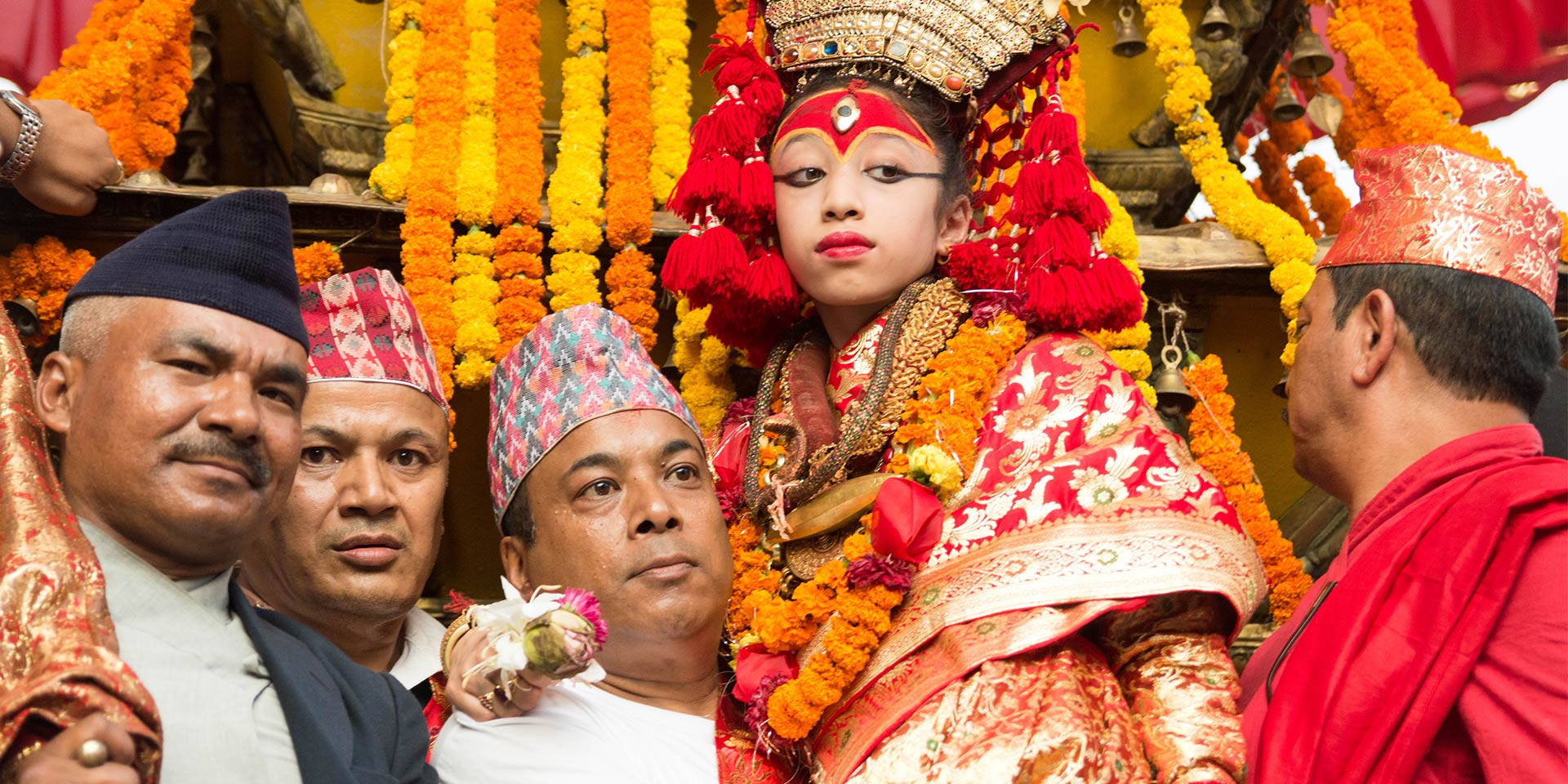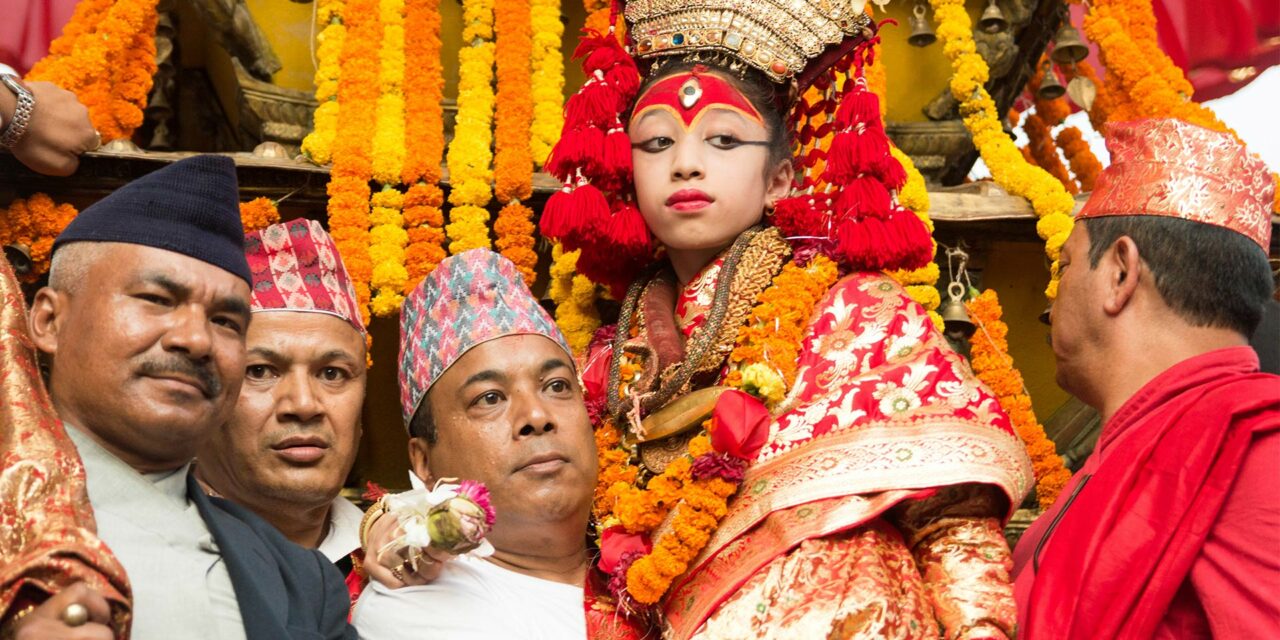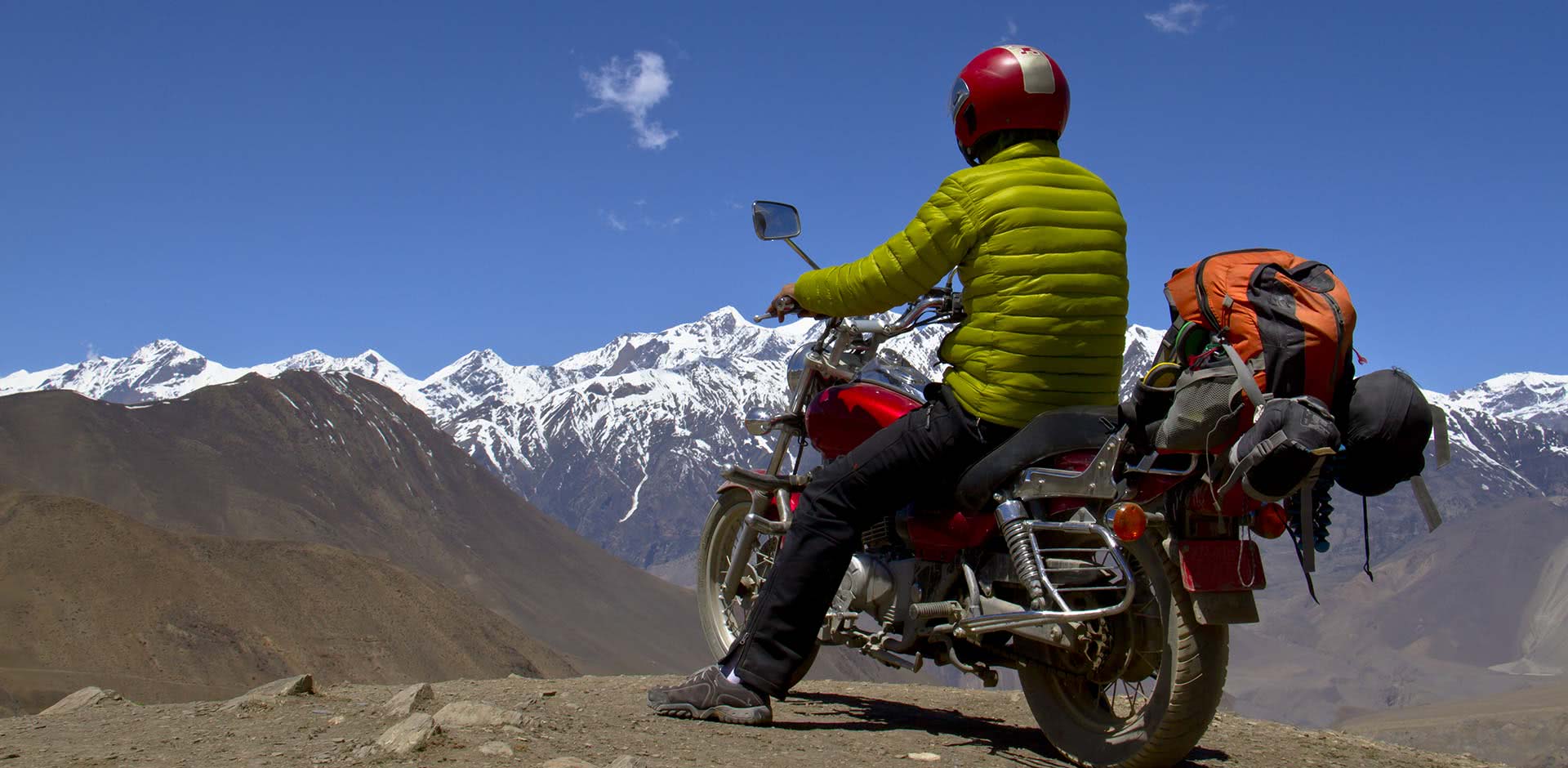It is all over in a few seconds. Through an intricately-carved wooden window, three eyes peer down. Two of these eyes scan the ancient Nepalese courtyard in which I’m standing, while the third remains stationary in the middle of a small forehead. That is a fire eye, a painted symbol which repels evil, according to the mythology of Nepal’s Newari people.
Before I can get a good look at this decoration, I am spotted by the two human eyes below it. They belong to an eight year old girl who immediately ducks out of view. She is not meant to be seen by members of the public, except for during major festivals, like the one she is currently rehearsing for which will take place tomorrow – the annual Indra Jatra festival. At all other times she is hidden away inside her grand old home in the city of Patan in the Kathmandu Valley.
Despite this reclusiveness, she is worshipped by millions of Nepalese people.
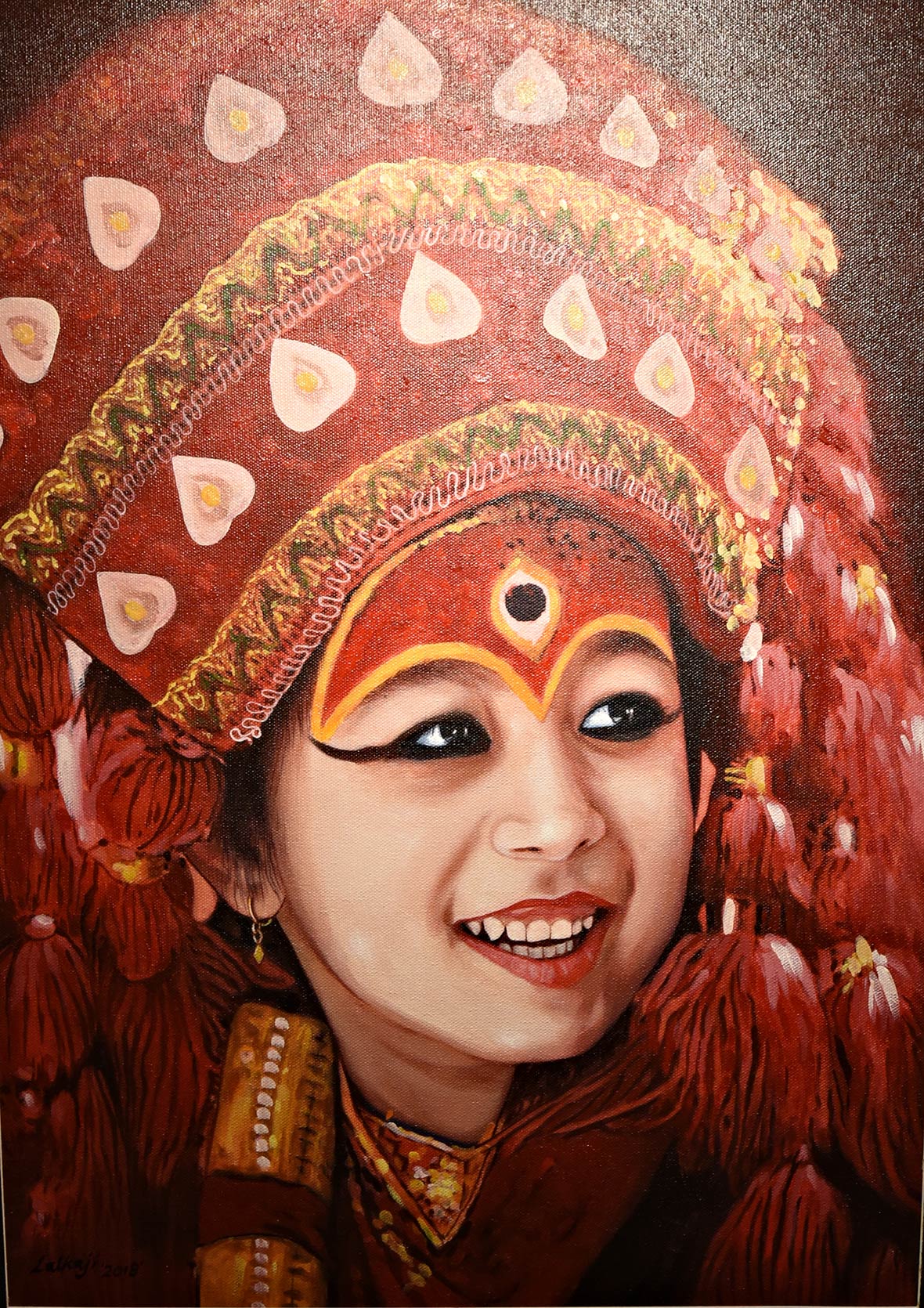
ABOVE: Kumari artwork in Kathmandu.
They long to look into her eyes. This is an experience which Newaris believe is equivalent to having direct contact with the gods. With her gaze she can cure illnesses, banish bad luck and shower a person with good fortune. This is the extraordinary life of the Kumaris, the living child goddesses of the Kathmandu Valley.
For more than 1,000 years, Kumaris have been a central part of Hindu and Buddhist culture in this region. From as young as three years old they are selected to be a Kumari, becoming an object of reverence for the Nepalese people. Clad in elaborate outfits, with the fire eye painted on their foreheads, these girls are widely believed to be the embodiment of the Hindu Goddess Kali.
While Kali is the Goddess of Death and Doomsday, Kumaris are also an icon of maternal affection and a representation of Devi, the Buddhist concept of the divine feminine energy that courses through the universe. That’s a heavy weight to rest on the narrow shoulders of a child. Yet being selected as a Kumari is a massive honour.
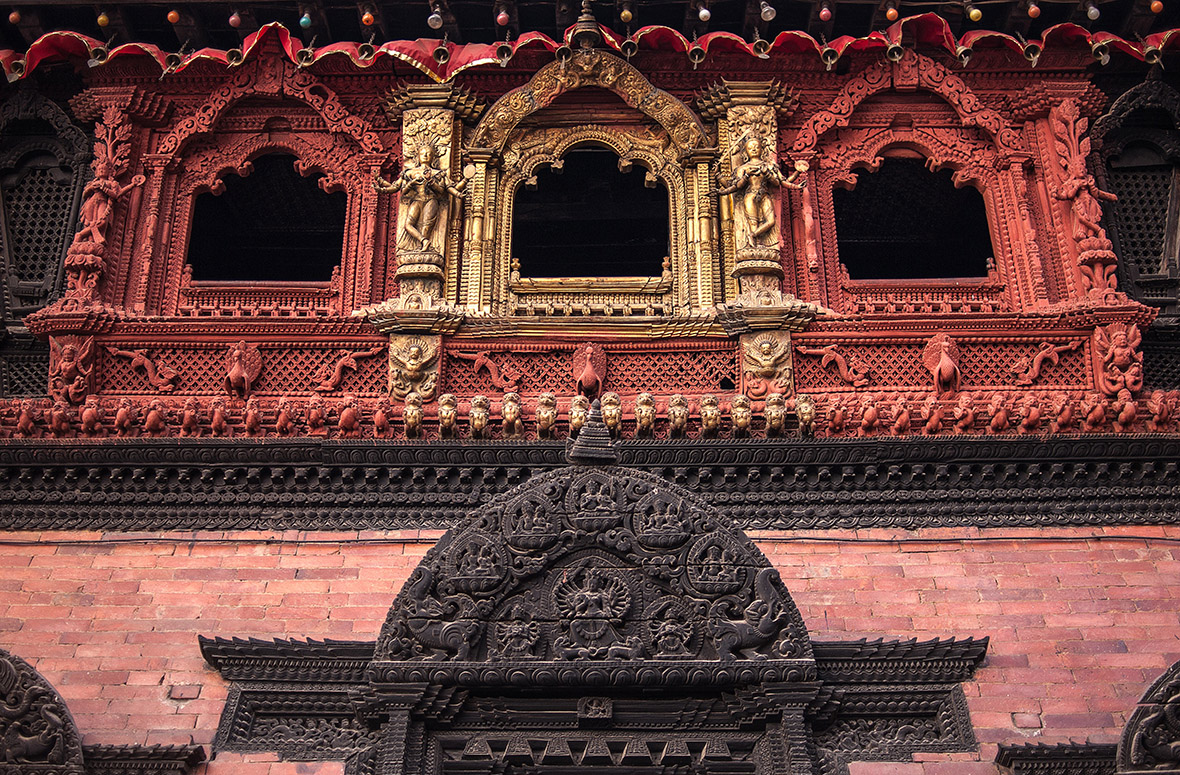
ABOVE: Courtyard of Kumari Bahal in Kathmandu Durbar Square.
There are 10 Kumaris in Nepal, of which nine are in the Kathmandu Valley, which is the traditional home of the Newaris. Young girls must compete to become a Kumari. The first selection criterion is lineage. They must come from one of a handful of Nepalese upper castes (prestigious bloodlines). When a Kumari is dethroned the search for her replacement begins.
A group of prospective Kumaris are judged by a panel of five Nepalese priests. These holy men analyse their lineage, personalities, speech and appearance. Kumaris must have unblemished skin across their whole body, perfect teeth, healthy hair and be well proportioned. Any physical imperfection can be enough for a girl to be ruled.
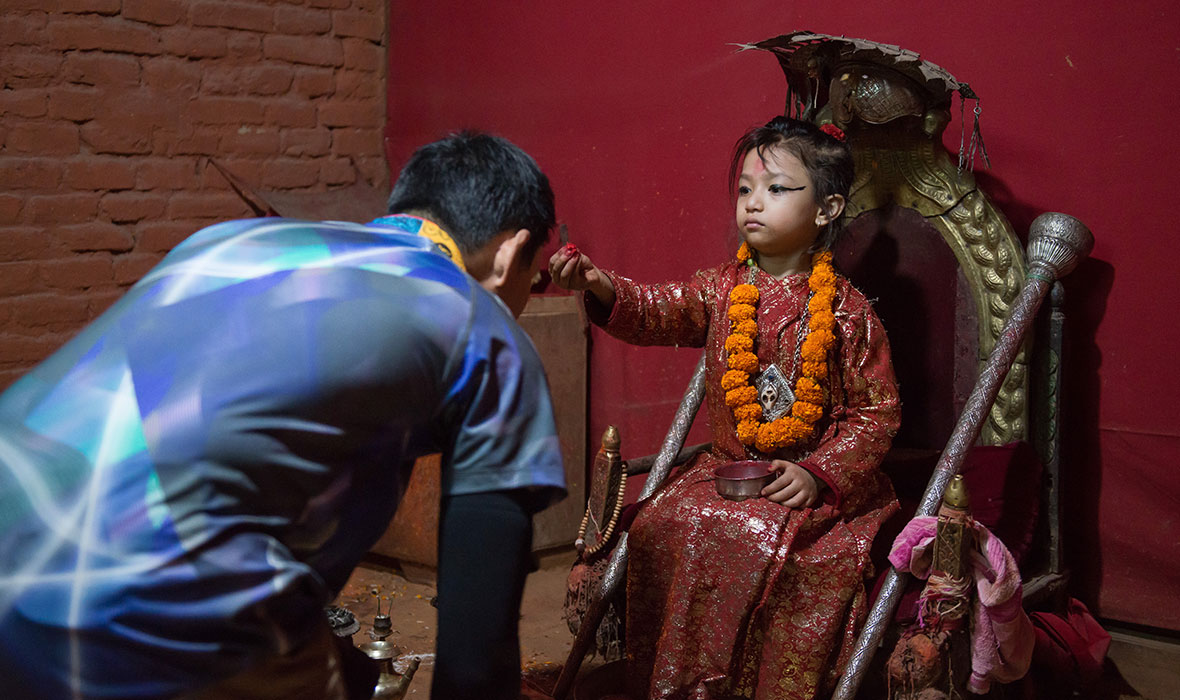
The importance placed on a pristine, virginal appearance continues throughout their reign as Kumari. The most common way in which they are dethroned is by having their first menstruation – this spilling of blood is believed to represent the loss of their heavenly powers.
At that moment, the Kumari undergoes a turbulent change in her life. Not only has she entered pubescence but she is stripped of her title, and all the reverence and financial security that goes with it. She must then find a way to adapt to regular life. While such worship of children was once common in numerous regions across the subcontinent, Nepal is the only place where it remains this prominent.
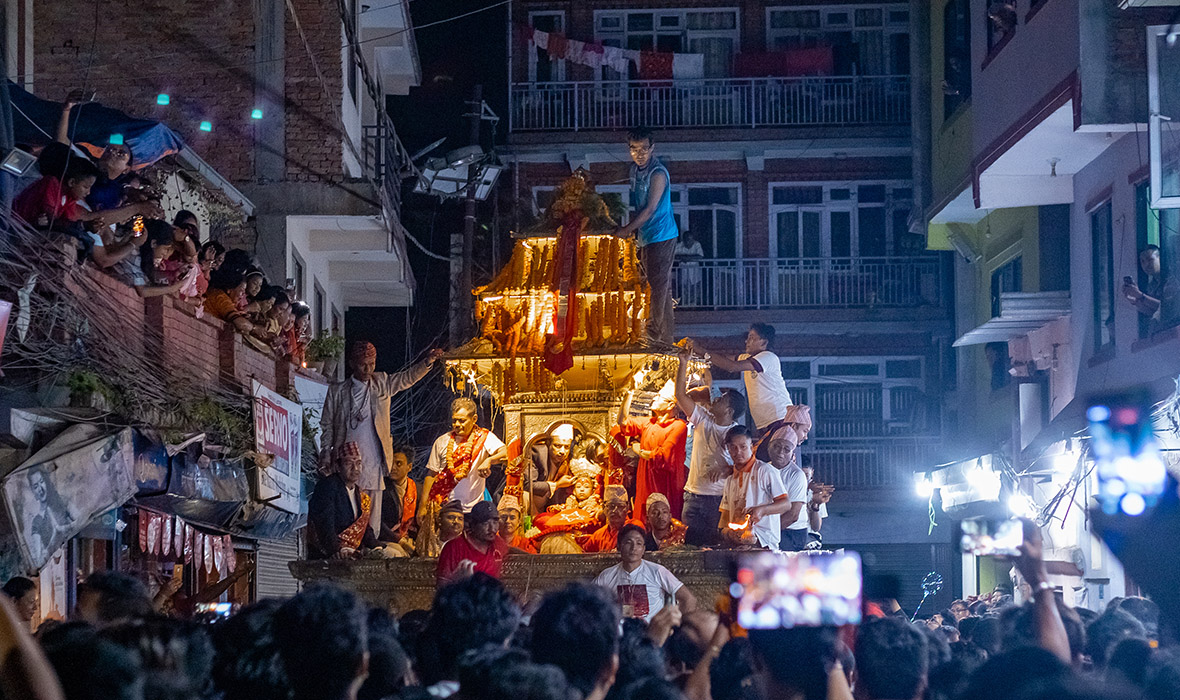
ABOVE: People pulling chariot of Kumari Goddess during Indra Jatra Festival in Nepal.
Tourists can see the Kumari during one of several annual festivals in the Kathmandu Valley. The largest of these is Indra Jatra, held each September across five days at locations across the valley, which is home to the cities of Kathmandu, Bhaktapur and Patan, each of which is within 20 minutes’ drive of one another. The centrepiece of this festival is a chariot procession for the Royal Kumari of Kathmandu, the highest ranked of all the Kumaris.
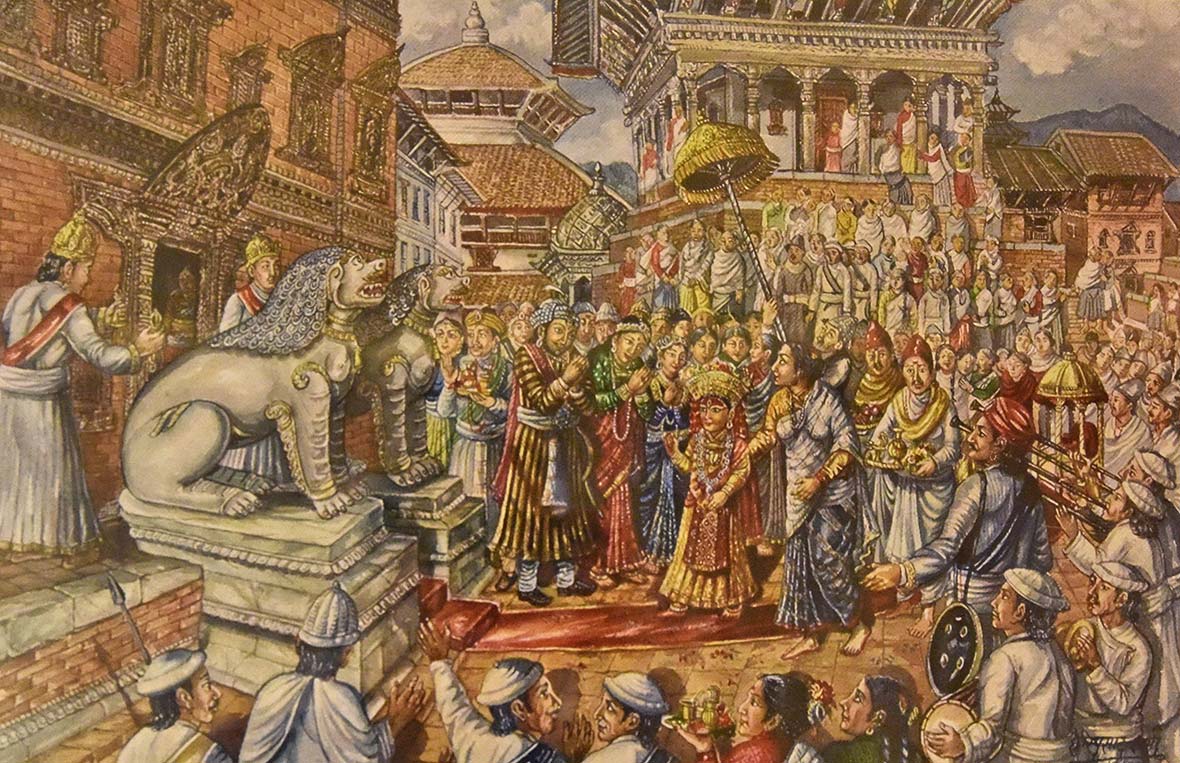
ABOVE: Kumari artwork.
Crowds flock to Kathmandu to watch this Kumari as she is carried through the streets of the city’s old town area. The Royal Kumari lives in a commanding, timeworn palace alongside Durbar Square, the historic heart of Kathmandu. If they’re lucky, tourists and locals can get a glimpse of a Kumari at any time of the year by visiting one of the nine Kumari palaces which are scattered across the valley and accept visitors.
With their complex stonework, impressive joinery and intricate lattice features, these buildings are fine attractions in their own right. It was purely to admire their unique Newari architecture that I visited the Kumari palaces in Kathmandu and Patan.
The former of these was swamped by tourists and locals, who were posing for photos inside its courtyard. The Royal Kumari was, a staff member told me, tucked away in the living quarters on the first floor, preparing for the procession the following day. Then I went to Patan, where the Kumari palace was empty. As I was taking a photo of the wood carvings on its first floor, those three eyes suddenly came into view. If only for a moment, the Kumari had appeared. In more ways than one, fortune was on my side.

